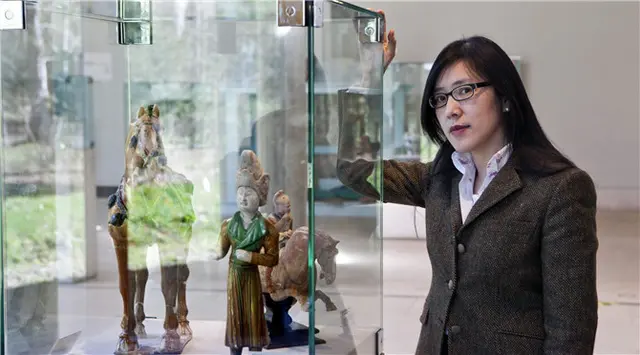One of the most important collections in Europe of Chinese porcelain has been given a new home after a multi-million dollar facelift at a national museum near Liverpool.
Artifacts from China form a stunning collection at the Lady Lever Gallery in Port Sunlight, a garden village built for factory workers by the soap manufacturer William Lever.
One of the stars of the collection is a famous life-size figure of Guanyin, the Goddess of Mercy.
The collection contains objects primarily from China's Kangxi, Yongzheng and Qianlong periods and earlier ceramics of the Han, Tang and Song dynasties (2nd century BCE to 14th century AD).
Dr. Yupin Chung, an art historian, curator and consultant in Chinese art, is a leading expert on the Lever collection at the gallery which is part of the state-run National Museums Liverpool (NML).
She said: "Chinese art was a significant area of collecting for Lever, and not just a passing interest. Ceramics, in particular, were one of his passions. His preference was for porcelain of the Qing dynasty (1644-1911). However he believed the gallery should also show a selection of earlier pieces."
The new Chinese rooms, opening this Friday, have seen the gallery's extensive southern wing restored to how it looked when it was opened in 1922 by the youngest daughter of Queen Victoria.
Lever drew up plans for his gallery in 1913, the year his wife died. When it finally opened in 1922 it was named in her honor by Lever.
NML's director of art galleries Sandra Penketh said: "When Lever came up with his idea for a gallery to display his extensive collection, he was fabulously rich. But he decided to build the gallery at the heart of the village he built for the families of the workers from his own nearby soap factory. It was Lever's gift to the nation."
"Even with its village location we get more than 200,000 visitors a year. Our Chinese collection is one of the most important in a Europe. Lever was most interested in Britain's 18th century grand country houses and how they were decorated. It was at that time Chinese porcelain became fashionable in those houses.
Chinese items influenced many English furniture makers of the age, such as Chippendale."
Dr. Chung added: "The gallery represents a unique teaching resource and offers object-based learning emphasizing the links between the Chinese objects and historical analysis. Such collections are able to connect audiences to their past, rich and varied cultures, momentous events, inspiring ideas, and the places where the nation's history happened."
Among other famous pieces on show are a pair of significant altar ornaments, in the form of richly dressed elephants, carrying beaker-shaped vases in their backs. Also exhibited are a fine Ding ware dish and a Jun ware flowerpot of the Song dynasty, both very rare.
As well as its Chinese collection, the gallery has more than 1, 500 objects, including the best collection of Wedgwood jasperware in the world, and outstanding 18th century paintings, furniture and sculpture.
 简体中文
简体中文

